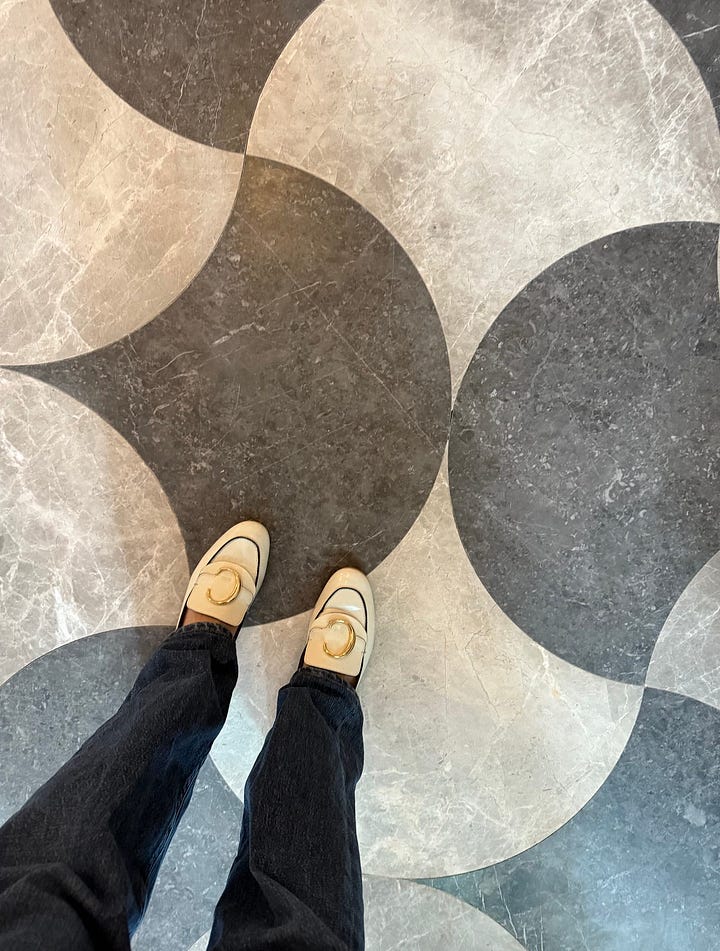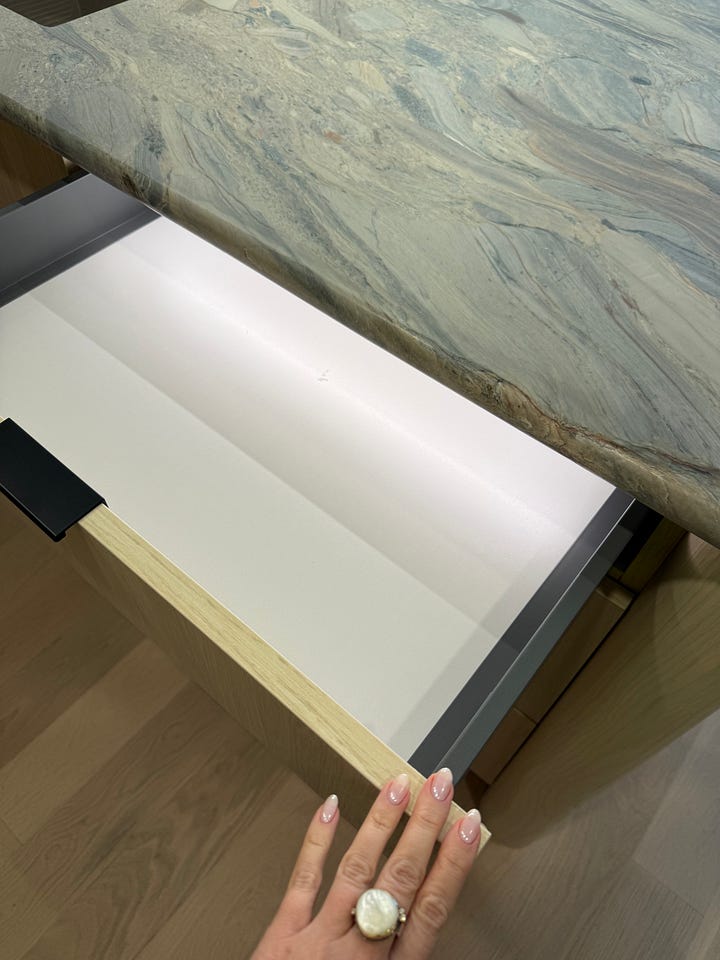Welcome back and happy May!
The city is officially in bloom.
Between Met Gala Monday and a week full of showings, there’s an undeniable energy pulsing through New York right now. I spent the last few days hopping between properties—several of which, yes, came with those elusive keys to Gramercy Park (a proper NYC flex). Our team also has access to 8+ new development projects in various stages of pre-launch, one of which I’ll preview below. And in a small but mighty real estate win: a board package I submitted was approved with no questions asked. If you know, you know.
This week, I’m giving market updates, new dev previews, an NYC history lesson, and pulling back the curtain on one of NYC’s most mysterious real estate beasts: the co-op!
Market Update, but Make It Fun (Or at least less boring!)
Rents Are Rising (Again)
This week, I’m zeroing in on Manhattan rents, which keep climbing. In March, they broke the $4,500 threshold for median asking price/mo. By April? Nearly $4,800. With demand still outpacing available listings, we expect prices to continue upward and hit new records as we move into peak rental season.
Will this push more renters to consider buying? Time will tell, but the pressure is building. If you're shelling out nearly $5K a month in rent, it might be time to ask: could that be building equity instead? Rising rents often become the nudge buyers need to explore ownership.
Let’s do the Real (Estate) Math- Rent vs. Own: A 30-Year View
Monthly Rent: $4,800
30-Year Total Rent Paid: $1,728,000
Own Instead? A mortgage at $4,800/month could equal a ~$720K loan. Over 30 years, instead of paying rent to a landlord, you'd be building equity, likely gaining hundreds of thousands in long-term value (depending on appreciation).
New Development Sneak Peek: VITA
Our team is excited to represent New York’s largest Passive House condominium, Vita. The building was certified by the Passive House Institute. What does that mean? Passive House is a rigorous international standard for energy efficiency in buildings. To receive certification means Vita was designed and built to be ultra energy-efficient, quiet, and comfortable. The key takeaway is that Vita uses up to 90% less energy than a typical building. This equals lower utility bills for owners, and as energy codes tighten, energy-efficient buildings will likely age better and potentially hold more substantial resale value down the road.
Lower utility bills 🤝 Vita
The project has two distinct buildings, North and South, with a passageway for connected amenities and an accessible downtown-meets-midtown location.
✨ Studio to 2-bed options available!




If you're curious, I’d love to give you a first look and walk you through the details — comment below or reach out directly.
Of Note: The May 1st Tradition of Moving Day
Once upon a time, May 1st wasn’t just another spring day in New York—it was the day when virtually all residential leases expired simultaneously. Yep, all at once. From the colonial era through the early 20th century, May 1st was known as “Moving Day” across the city. This tradition led to a citywide relocation frenzy each year.
Landlords were required to notify tenants of rent changes by February 1st, giving tenants three months to find new accommodations. On May 1st, the streets teemed with horse-drawn carts and wagons as families moved their belongings, creating chaotic scenes described by newspapers of the era. Even schools closed to accommodate the mass exodus, with estimates of up to a million people moving in a single day.
It sounds absurd now (and exhausting), but it was a very real tradition. Eventually, the city came to its senses, primarily due to the introduction of rent control, changes in housing patterns, and the logistical challenges posed during wartime. Also, buildings became taller and more complicated to vacate. Though this tradition faded by the 1920s, its spirit lives on, most poetically, in a painting hanging in the Met itself. (Because, of course, it does.) Moving Day by Louis Maurer captures the frenzy in full flair with furniture in the streets, tempers raging, everything slightly askew.
Why Is This 2-Bedroom Interviewing Me?
Let’s talk living arrangements: the eternal New York question — condo or co-op?
QUICK OVERVIEW OF THE DIFFERENCES BETWEEN A CONDO AND A CO-OP.
In Manhattan, a condo is an individually owned unit within a building, vs. a co-op is a share in a corporation that owns the entire building, giving the owner the right to live in a specific unit. Condo owners have direct ownership of their unit and receive a deed when they purchase, while co-op owners purchase shares in the corporation and receive a proprietary lease for their unit at closing.
Fun fact: Co-ops are pretty much unavoidable! 70% of Manhattan's inventory is co-ops.
Condo prices are, on average, higher than co-ops due to the type of ownership you receive with each and the lengthy approval process required with co-ops.
The allure of co-ops? Affordability (I know, I know—hilarious word when talking about anything in NYC), legacy, location, and a chance at a prestigious address with historic charm. Many of the city’s most architecturally significant buildings are co-ops. And while the process may be... layered, the payoff is real: a piece of New York history you can actually live in.
The headaches? The infamous board interview, financial scrutiny like nowhere else, the resale value (and that elusive exit).
1. The Infamous Board Interview
What it is: A co-op board has the final say on who can buy into the building. (IMHO, co-ops could be considered the last legal form of housing discrimination.)
Why it’s intimidating: Even all-cash buyers with spotless records can be rejected, without explanation.
It’s part job interview, part charm offensive, part psychological warfare.
2. Financial Scrutiny Like Nowhere Else
What’s required: Expect to hand over tax returns, pay stubs, net worth statements, and possibly your firstborn (kidding, or am I?).. Co-ops also have higher sensitivities to DTI. They will scrutinize your monthly spending—they want to know where and how you spend your money.
Personal anecdote: I had a client for whom the board made her promise in writing in her board package cover letter that she would put her work bonus towards her mortgage instead of investing it in her retirement fund, as she had always done.
Why it matters: Boards want buyers with solid financials and a high post-closing liquidity cushion, sometimes enough to live mortgage-free for years.
It’s not just about being able to buy the apartment, it’s about proving you’ll never need to sell it.
3. The Resale Clause (and That Elusive Exit)
Why resale can be tricky: Boards may deny your buyer, slowing down or derailing your exit strategy.
Common pain points: flip taxes (despite the name, it’s not actually a tax; it’s more of a transfer fee paid to the co-op), limitations on subletting, and tight resale rules.
Think of it like dating someone whose parents still get final say, years later.
MY POV:
If you’re buying in New York, chances are you’ll come face-to-face with a co-op eventually. And while the board interview lore and financial scrutiny can sound intimidating, co-ops don’t have to be scary. With the right agent guiding you, setting honest/realistic expectations, and a little patience, they can actually be one of the smartest ways to buy in, especially if location, prewar charm, and long-term value are something you desire.
Remember: not all co-ops are created equal. Old-school strictness is on a sliding scale. One green flag I always look for is a solid, outside management company. Red flag? Self-managed buildings are often more disorganized and opaque.
I'll be covering everything from market musings to architectural daydreams, but if there’s a real estate topic you’re curious about, drop a comment. I’d love to hear from you. X















Thank you for sharing this valuable insight!